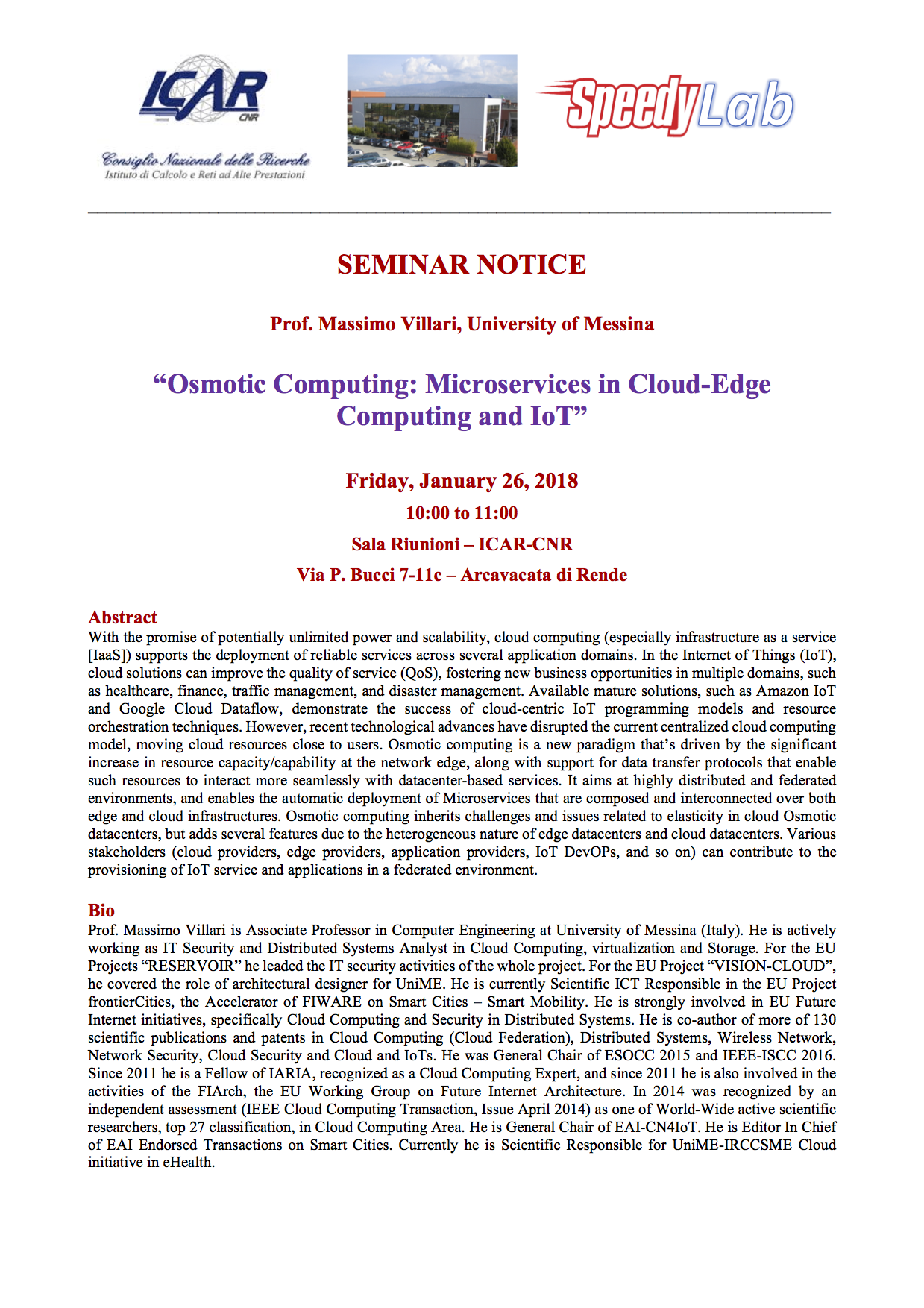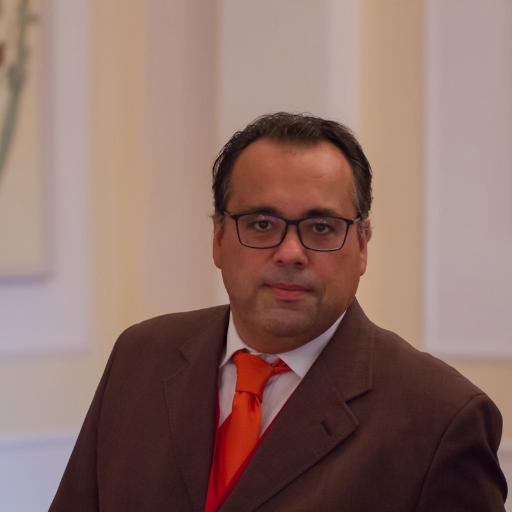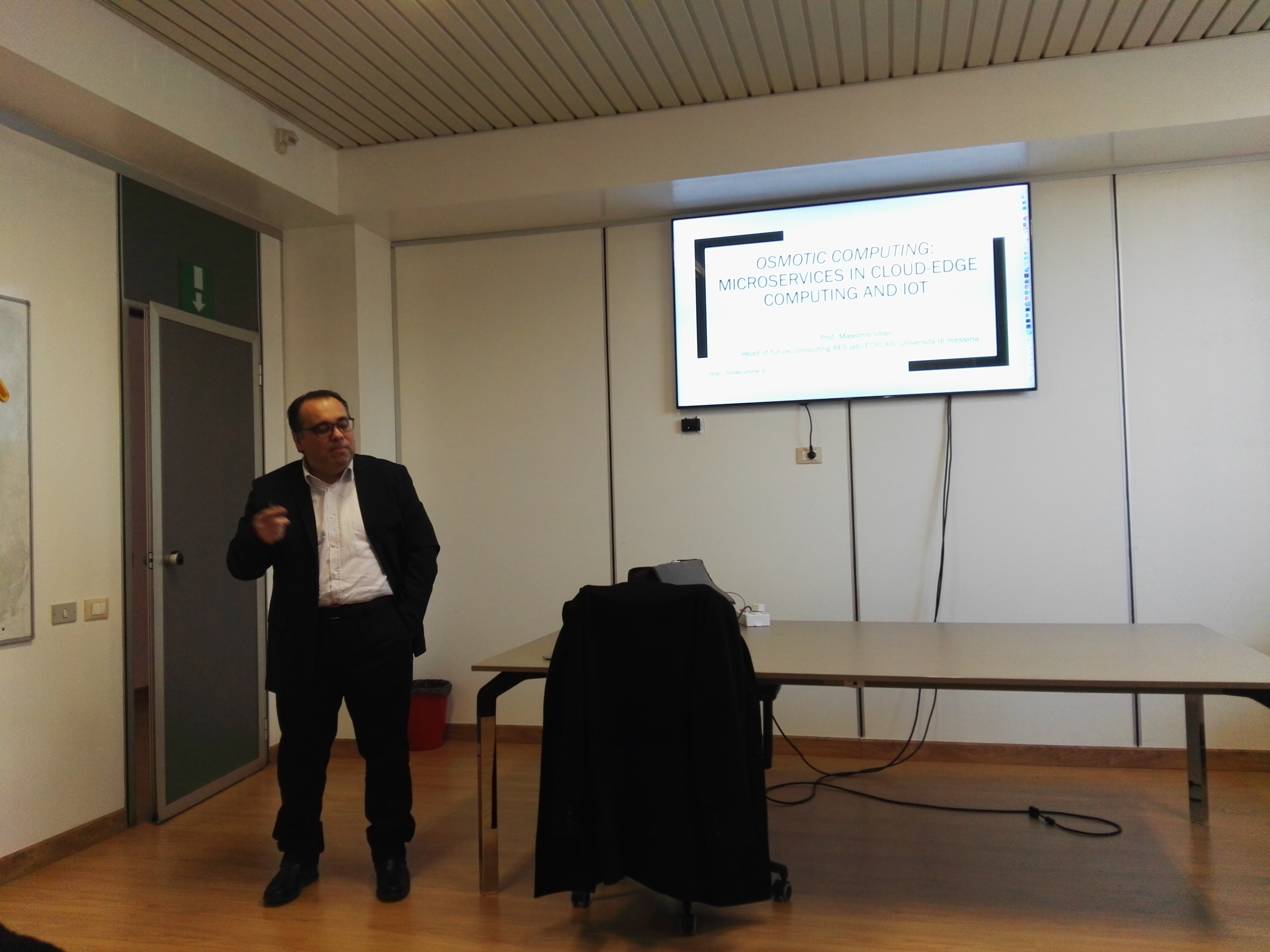Abstract
With the promise of potentially unlimited power and scalability, cloud computing (especially infrastructure as a service [IaaS]) supports the deployment of reliable services across several application domains. In the Internet of Things (IoT), cloud solutions can improve the quality of service (QoS), fostering new business opportunities in multiple domains, such
as healthcare, finance, traffic management, and disaster management.
Available mature solutions, such as Amazon IoT and Google Cloud Dataflow, demonstrate the success of cloud-centric IoT programming models and resource orchestration techniques. However, recent technological advances have disrupted the current centralized cloud computing model, moving cloud resources close to users.
Osmotic computing is a new paradigm that’s driven by the significant increase in resource capacity/capability at the network edge, along with support for data transfer protocols that enable such resources to interact more seamlessly with datacenter-based services. It aims at highly distributed and federated environments, and enables the automatic deployment of Microservices that are composed and interconnected over both edge and cloud infrastructures. Osmotic computing inherits challenges and issues related to elasticity in cloud Osmotic datacenters, but adds several features due to the heterogeneous nature of edge datacenters and cloud datacenters. Various stakeholders (cloud providers, edge providers, application providers, IoT DevOPs, and so on) can contribute to the provisioning of IoT service and applications in a federated environment.
Short Bio: Prof. Massimo Villari
Prof. Massimo Villari is Associate Professor in Computer Engineering at University of Messina (Italy). He is actively working as IT Security and Distributed Systems Analyst in Cloud Computing, virtualization and Storage. For the EU Projects “RESERVOIR” he leaded the IT security activities of the whole project. For the EU Project “VISION-CLOUD”, he covered the role of architectural designer for UniME. He is currently Scientific ICT Responsible in the EU Project frontierCities, the Accelerator of FIWARE on Smart Cities – Smart Mobility. He is strongly involved in EU Future Internet initiatives, specifically Cloud Computing and Security in Distributed Systems. He is co-author of more of 130 scientific publications and patents in Cloud Computing (Cloud Federation), Distributed Systems, Wireless Network, Network Security, Cloud Security and Cloud and IoTs. He was General Chair of ESOCC 2015 and IEEE-ISCC 2016.
Since 2011 he is a Fellow of IARIA, recognized as a Cloud Computing Expert, and since 2011 he is also involved in the activities of the FIArch, the EU Working Group on Future Internet Architecture. In 2014 was recognized by an independent assessment (IEEE Cloud Computing Transaction, Issue April 2014) as one of World-Wide active scientific researchers, top 27 classification, in Cloud Computing Area. He is General Chair of EAI-CN4IoT. He is Editor In Chief of EAI Endorsed Transactions on Smart Cities. Currently he is Scientific Responsible for UniME-IRCCSME Cloud initiative in eHealth.





